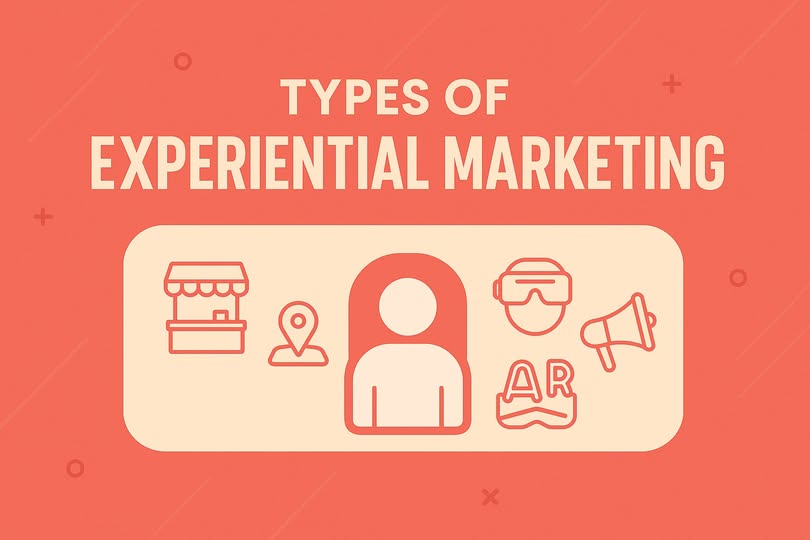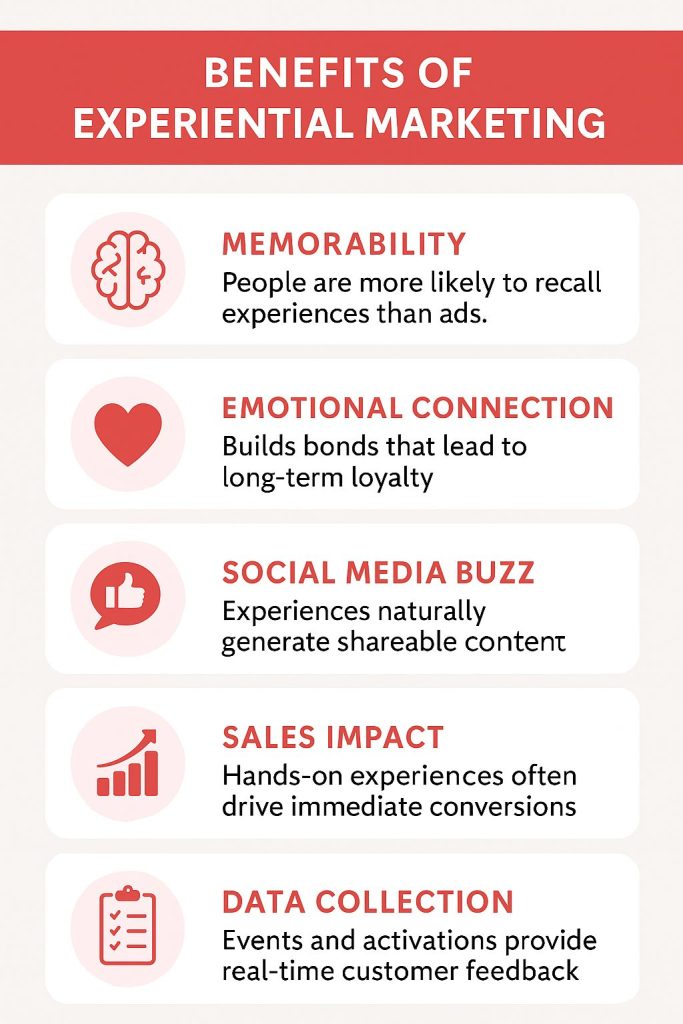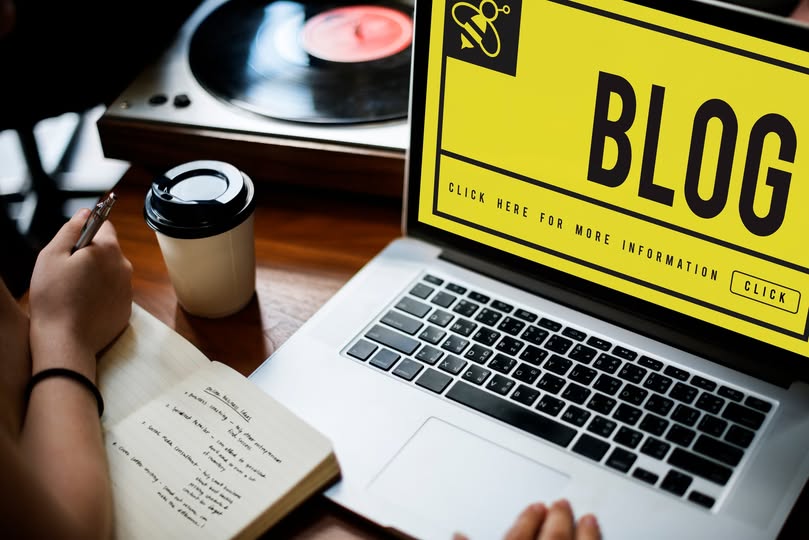In today’s noisy digital world, traditional ads are no longer enough to win customer attention. People want to experience brands, not just see or hear about them. That’s where experiential marketing comes in. Instead of pushing messages, experiential campaigns invite audiences to interact, immerse, and build emotional connections. From live pop-up events to AR-powered campaigns, these experiences create stories customers remember—and share.
This blog covers the types of experiential marketing, explaining their impact on customer engagement and how your brand can apply them to stand out. From interactive pop-ups to influencer-led events, these strategies build authentic connections that traditional advertising often misses. As technology continues to reshape marketing, experiential approaches are becoming more powerful. Also, you can learn how innovation plays a vital role in campaigns through the Future of AI in Digital Marketing.
What Is Experiential Marketing?
Experiential marketing, sometimes called “engagement marketing” or “live marketing,” is a strategy that directly involves customers in a brand experience. Unlike static ads, it creates two-way interaction. It makes people feel, explore, and connect—often leading to stronger brand loyalty.
Key elements include:
- Emotional engagement
- Interactivity
- Memorability
- Shareability (especially on social media)
The real power of experiential marketing lies in creating authentic moments where consumers feel part of the brand story.
Why Experiential Marketing Matters
In competitive landscape, consumers are constantly bombarded with digital ads, emails, and promotional content. What truly sets a brand apart is not just what it sells but how it makes people feel. This is where experiential marketing plays a powerful role—it transforms passive audiences into active participants, fostering genuine emotional connections that last long after the campaign ends.
Emotional bonds drive loyalty. When customers participate in an engaging experience—whether it’s testing a product, joining a live event, or exploring a branded pop-up—they feel valued and connected. This emotional attachment increases the likelihood of repeat purchases and long-term brand loyalty.
Word-of-mouth impact is amplified. Today’s audiences are eager to share unique moments on social media. A memorable brand experience quickly turns into organic buzz, extending the campaign’s reach far beyond the initial event.
Deeper data insights become possible. Live interactions provide authentic feedback that goes beyond online surveys or analytics. Brands can observe real consumer behavior, preferences, and engagement in the moment—valuable information for shaping future strategies.
Competitive advantage is clear. With countless brands vying for attention, those that offer meaningful experiences naturally rise above the noise. Customers remember how a brand made them feel, not just what they saw in an ad.
Ultimately, experiential marketing matters because it bridges the gap between brand messaging and human connection. By prioritizing immersive, shareable, and memorable experiences, businesses—whether global corporations or small startups—can create lasting impressions that drive both loyalty and growth.
9 Types of Experiential Marketing: You can Consider
Experiential marketing offers brands the chance to connect with audiences in unforgettable ways. From pop-up events and immersive VR/AR experiences to influencer-led campaigns and guerilla stunts, each type creates opportunities for customers to engage directly with your brand. Unlike traditional ads, these experiences invite participation, spark emotions, and generate authentic word-of-mouth buzz. You should experiment because no single strategy fits all audiences—trying different approaches helps identify what resonates most with your customers. By exploring various types of experiential marketing, businesses can discover creative ways to boost loyalty, drive sales, and stand out in today’s competitive market.

Let’s check details below! and Get started-
1. Brand Activations
Brand activations are events or campaigns designed to launch, promote, or reinforce a product or brand identity. They often use creative setups, free samples, or interactive booths to draw attention.
Example: Coca-Cola’s “Share a Coke” campaign wasn’t just about customized bottles. They set up interactive kiosks where people could print their names on Coke bottles, making customers part of the product story.
Why it works: It builds immediate engagement and makes consumers feel connected to the brand.
2. Pop-Up Experiences
Pop-up shops or temporary installations are a powerful way to generate buzz. They create urgency (limited-time experiences) and exclusivity.
Example: Glossier’s beauty pop-ups became Instagram-famous because customers wanted to experience and share the aesthetic.
Tips for small businesses: A pop-up doesn’t need a huge budget. It could be a booth at a mall, a creative stall at a local fair, or even a temporary space designed around your brand values.
Related Reading: For budget-friendly ways to build brand visibility, check out Affordable PR Strategies.
3. Sampling Campaigns
One of the oldest but most effective types of experiential marketing is product sampling. Giving customers a free, hands-on experience creates immediate trust.
Example: Food brands often hand out free samples in grocery stores. But modern sampling is going digital—like sending curated sample boxes through influencer partnerships.
Pro tips: Pair sampling with storytelling. Instead of just handing out a snack, tell people the origin, health benefits, or story behind it.
4. Immersive Experiences (VR/AR)
Virtual and augmented reality are changing experiential marketing. They allow brands to create environments beyond physical limits.
Example: IKEA’s AR app lets customers place furniture virtually in their homes before buying. Nike has used VR to simulate basketball courts for shoe testing.
Why it works: It combines tech innovation with consumer convenience, creating a futuristic and memorable touchpoint.
5. Influencer-Led Experiences
Sometimes, the best experiences come through trusted voices. Partnering with influencers allows brands to co-create events, live sessions, or community experiences.
Example: A fitness brand may collaborate with a fitness influencer to host a live workout challenge or bootcamp, allowing followers to engage both online and offline.
Why it matters: Influencers bring authenticity and ready-made audiences who trust their recommendations.
Related Reading: Discover how to collaborate effectively in Find Micro Influencers.
6. Guerilla Marketing Stunts
Among the boldest types of experiential marketing, guerilla marketing stunts thrive on creativity, surprise, and unconventional execution. Unlike traditional campaigns, these activations often occur in everyday public spaces—streets, parks, transit stations—where people least expect them. The goal is to grab attention instantly, spark curiosity, and create a buzz that spreads both offline and online.
A classic example is IKEA’s subway takeover in Paris, where entire train cars were furnished with real sofas, lamps, and tables. Commuters were not just exposed to ads; they experienced the comfort of IKEA products during their daily ride. This low-cost but high-impact stunt created a viral wave on social media while reinforcing the brand’s promise of stylish, affordable living.
Other notable stunts include Coca-Cola’s “Happiness Machine”, a vending machine that surprised students with free drinks, pizzas, and even balloons. It wasn’t just about free products; it was about generating joy, laughter, and shareable moments.

Coca Cola Campaign Video Image
Why it works: guerilla stunts rely on the unexpected. They’re highly memorable, photogenic, and often newsworthy. For small businesses, it doesn’t require huge budgets—just clever ideas like flash mobs, sidewalk art, or creative window displays can make a lasting impression.
7. Event Sponsorships and Live Engagement
Partnering with events (concerts, sports, expos) gives brands the chance to integrate themselves into shared community moments. But the key is going beyond logos—creating experiences inside the event.
Example: At music festivals, beverage companies often create branded lounges or interactive games that enhance the attendee experience.
For small businesses: Sponsoring local events can be affordable and powerful, especially if you engage directly with the community.
8. Workshops & Educational Experiences
Brands can add value by teaching rather than just selling. Hosting interactive workshops, demos, or webinars builds authority while fostering engagement.
Example: Sephora’s beauty classes not only let people try products but also educate them on skincare routines.
For digital-first businesses, online workshops and webinars are great experiential tools to connect with global audiences.
9. Cause-Driven Experiences
Modern consumers especially Gen Z connect deeply with brands that align with their values. Cause-based experiential campaigns tie brand identity to social good.
Example: TOMS Shoes hosted “One Day Without Shoes” events to raise awareness of global poverty, making participants feel part of a bigger mission.
When brands connect experiences with purpose, they create stronger loyalty and advocacy.
Benefits of Experiential Marketing
In a world saturated with advertisements, banner blindness and content fatigue are real. Consumers scroll past digital ads in seconds, delete promotional emails without opening them, and often skip commercials entirely. What they don’t forget, however, are moments that made them feel something. This is where experiential marketing stands apart—it transforms brand communication into memorable experiences.
Unlike traditional marketing that pushes a one-way message, experiential campaigns invite audiences to actively participate. Whether it’s sipping a new beverage at a pop-up café, exploring a product through virtual reality, or joining an influencer-led challenge, these experiences engage multiple senses at once. They create an emotional connection that lasts far beyond the event itself.
The impact is measurable, too. Experiences not only drive stronger brand recall but also encourage social sharing, fueling organic exposure across digital platforms. A successful experiential campaign turns customers into brand advocates—people who voluntarily spread the word because they genuinely enjoyed the interaction.
From building trust and loyalty to boosting immediate sales, the advantages are undeniable. Below are some of the most important benefits that highlight why experiential marketing is a powerful tool for modern brands:
- Memorability: People are more likely to recall experiences than ads.
- Emotional Connection: Builds bonds that lead to long-term loyalty.
- Social Media Buzz: Experiences naturally generate shareable content.
- Sales Impact: Hands-on experiences often drive immediate conversions.
- Data Collection: Events and activations provide real-time customer feedback.

How Small Businesses Can Use Experiential Marketing
Many assume experiential marketing is only for big brands, but that’s not true. Even small businesses can:
- Host free community events
- Create small pop-ups in local markets
- Collaborate with micro influencers
- Offer free samples paired with storytelling
- Run online experiential campaigns (challenges, contests, webinars)
By being creative and authentic, small businesses can stand out without massive budgets.
Future Trends in Experiential Marketing
Experiential marketing is constantly evolving, driven by technology, consumer behavior, and cultural shifts. What worked five years ago may not have the same impact today. As audiences demand deeper personalization, sustainability, and meaningful engagement, brands must rethink how they design experiences. The future will blend digital and physical worlds, leverage data for real-time adjustments, and prioritize community over one-off campaigns. Companies that embrace these shifts won’t just create memorable events they’ll build long-term relationships rooted in trust, authenticity, and shared values. Here are some emerging marketing trends shaping the future of experiential marketing:
- Hybrid Experiences – Mixing physical and digital activations.
- AI-Powered Personalization – Tailoring experiences to individual customers.
- Sustainability-Driven Events – Eco-conscious branding will dominate.
- Data-Driven Immersion – Using analytics to fine-tune live campaigns.
- Community-First Experiences – Building long-term brand tribes rather than one-off activations.
Related Reading: To stay updated daily, explore Best Blogs to Read Daily.
Conclusion: Making Experiences Your Brand Advantage
Experiential marketing is not just a trend, it’s the future of brand-consumer relationships. Whether it’s a pop-up shop, VR campaign, influencer-led challenge, or cause-driven event, the goal remains the same: to create experiences that customers never forget.
By understanding the different types of experiential marketing, brands of all sizes can find creative ways to connect more deeply, drive engagement, and inspire loyalty.
If your brand wants to stand out in today’s crowded market, don’t just advertise, create experiences. That’s how you transform audiences into loyal communities.


